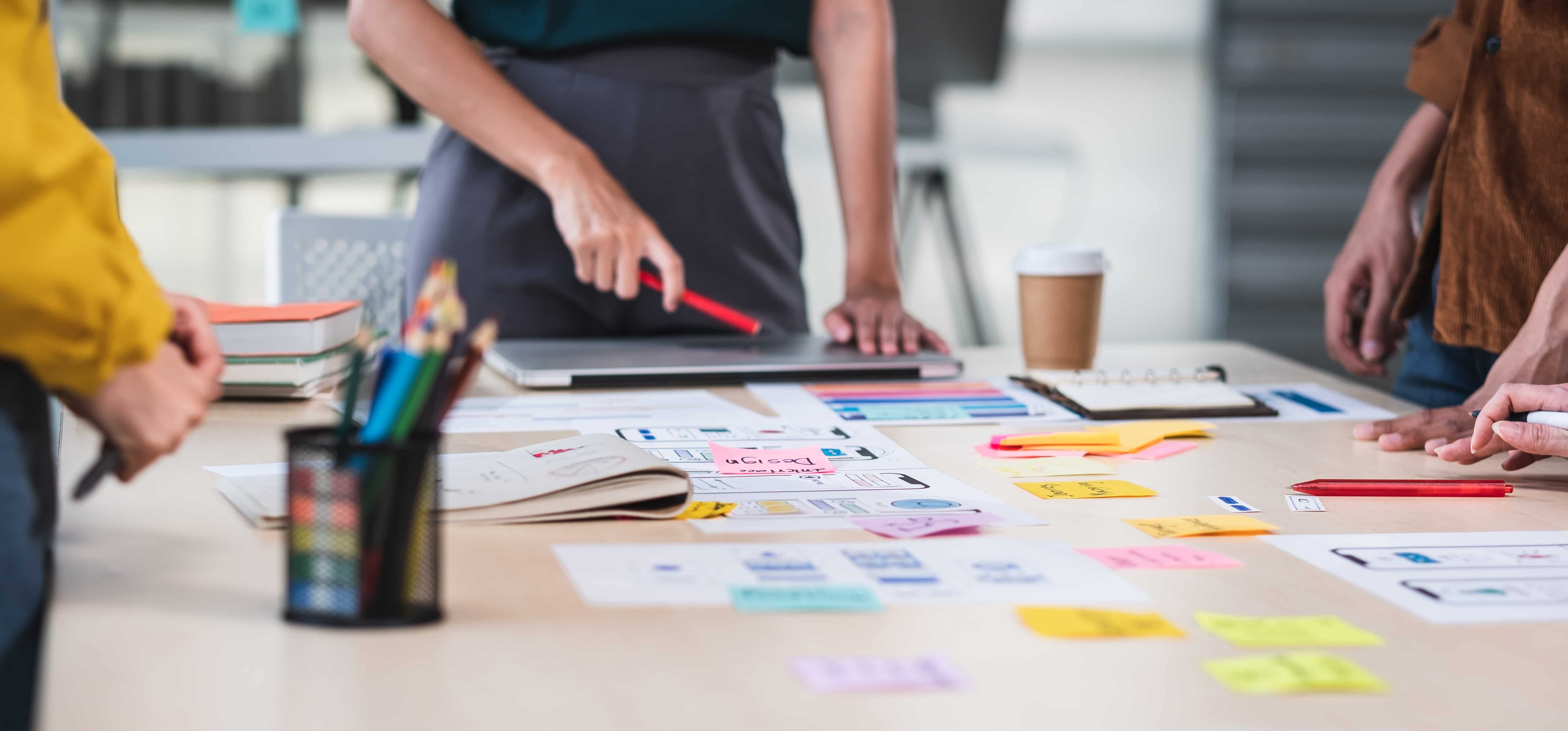Note: This is the second of a 2-part series and offers sage advice for those wanting to build their careers as an XD pro. Read Part 1: What Makes an Experience Designer Successful?
We’re always looking to share some knowledge and join the conversations that surround the world of Experience Design and the work we do each day.
Here are more thoughts and advice on making successful creative projects happen:
Where do you draw inspiration from?
Dolan Kutzman, Art Director: I follow a wide variety of content creators including designers, illustrators, animators, visual effects artists, photoshop gurus, and musicians. They all provide a constant source of inspiration and I'm always finding ways to apply a new technique from one discipline to another.
Lacey Meehan, Sr. Art Director: I tend to draw most of my inspiration from Dribbble, The Brand Identity, Behance, Design Better and of course, individual designers on Instagram. I’m also inspired by nature during my daily runs.
Alyssa Sopko, Graphic Designer: I like to draw inspiration from a lot of design sites like Dribbble, Behance and awwwards. I also think that we all take in so many different visuals constantly, it may be hard to pinpoint exactly where it comes from. I think in that way everything can be inspiration!
Matt Borrelli, Sr. Art Director: I draw inspiration from the work of others that I feel communicates its purpose in a very creative and effective way. Or sometimes work that just looks cool has an aesthetic that I want to apply to a project I'm working on. Concise strategy also inspires me to communicate something with words and design.
How do you begin a typical design project, whether it's a website makeover, a social graphics campaign, or an animation?
Lacey: I begin each project by submerging myself into the brand/product/service of the client, so all my design decisions are driven by a sense of understanding. With that knowledge I search for inspiration that can tell the story of the brand/goals of the project.
Alyssa: Most of the time when I’m starting a project, I try to think with an open mind and not judge ideas too soon. If I am too critical towards my ideas at the beginning stages, I am less likely to try new things and I may miss out on a unique concept.
Matt: I study the positioning of the brand or product/service of the campaign to understand its differentiator and then conceptualize the creative angle on how to sell it. Once that's established and I have a true understanding of the wants and pain points of the audience, it's time to start writing and designing.
Dolan: I usually begin by doing a lot of visual research. With the creative brief fresh in my mind, I'll go around collecting anything that inspires me to help spark an idea. I usually put together some type of mood board to help guide me in the early stages of the process.
How do you make sure your work hits the bullseye from a customer standpoint?
Alyssa: I always try to connect the design work back to the initial discovery conversation and the main strategy of the project. The design work should solve problems and tell their story in a way that is able to be appreciated and understood by their customers/users.
Matt: Research, research, research. Know what the user wants, needs, and expects. Deliver it to them where they are, and they'll come back for more. Everything else comes second to this.
Dolan: I believe the best way to ensure success from all perspectives is to follow the process and try not to deviate from it, if possible. There are critical checkpoints throughout the process that ensures everyone is always on the same page. I think overcommunication is important in the early stages, so there isn't any confusion down the road.
Lacey: I make sure to take detailed notes during client calls. Successful projects always begin by listening. It’s critical to know the most important concerns of the client and then knowing how to communicate that they were heard. This is often done during the presentation of the design, making sure to call out the key pieces you know the client is looking for. Regarding the actual design, I ask myself "is this something I'd be happy with if I were the client?" It helps put me in their shoes and go the extra mile (OCD/perfectionism may or may not contribute to this).
What's the weirdest part of your design process?
Matt: When conceptualizing a campaign, I spend a few hours very focused on solving the problem, then I put it aside and let my mind subconsciously work on it for a day before going back to it. During that time, I'll get more ideas — usually the best ones — at very random times. Before the ideas disappear into thin air, I talk into my phone to record them while lying in bed, driving, taking a walk, etc.
Dolan: It might not be weird but taking frequent breaks to pet my dogs is a crucial part of my process.
Lacey: The weirdest part of my design process is the period in between knowing in my mind what it is I want and bringing it to life on screen. Sometimes the process requires a lot of trial and error (and some strange looking compositions) before I reach the vision.
Alyssa: I think for me the weirdest part is the beginning when you’re trying out a lot of different ideas. It’s weird once a project is done to look back at your initial work and see how much it evolved!
Thanks for reading!
Please help us spread the knowledge by sharing this article with your peers, and don’t hesitate to contact us with any questions about your digital marketing future.

